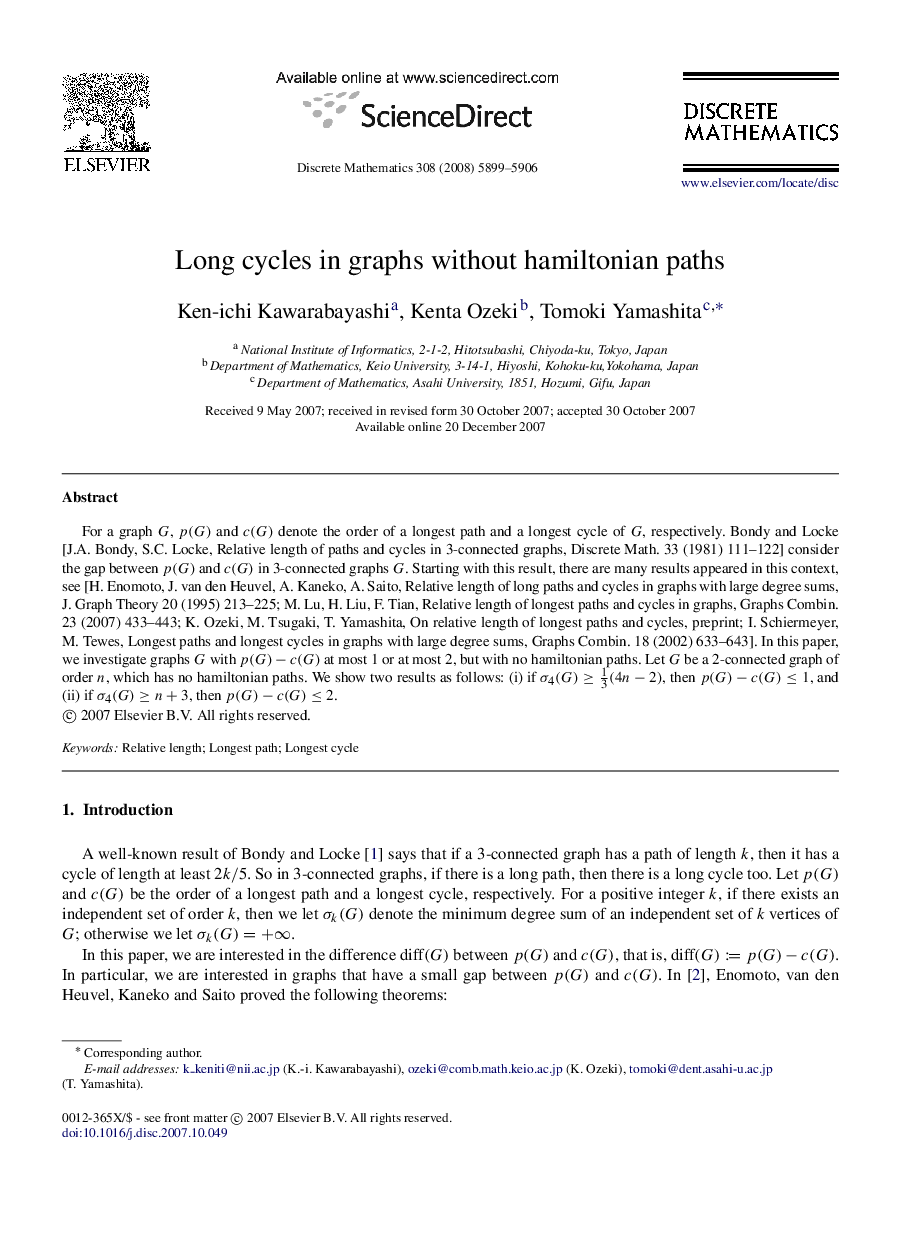| Article ID | Journal | Published Year | Pages | File Type |
|---|---|---|---|---|
| 4650310 | Discrete Mathematics | 2008 | 8 Pages |
For a graph GG, p(G)p(G) and c(G)c(G) denote the order of a longest path and a longest cycle of GG, respectively. Bondy and Locke [J.A. Bondy, S.C. Locke, Relative length of paths and cycles in 3-connected graphs, Discrete Math. 33 (1981) 111–122] consider the gap between p(G)p(G) and c(G)c(G) in 3-connected graphs GG. Starting with this result, there are many results appeared in this context, see [H. Enomoto, J. van den Heuvel, A. Kaneko, A. Saito, Relative length of long paths and cycles in graphs with large degree sums, J. Graph Theory 20 (1995) 213–225; M. Lu, H. Liu, F. Tian, Relative length of longest paths and cycles in graphs, Graphs Combin. 23 (2007) 433–443; K. Ozeki, M. Tsugaki, T. Yamashita, On relative length of longest paths and cycles, preprint; I. Schiermeyer, M. Tewes, Longest paths and longest cycles in graphs with large degree sums, Graphs Combin. 18 (2002) 633–643]. In this paper, we investigate graphs GG with p(G)−c(G)p(G)−c(G) at most 1 or at most 2, but with no hamiltonian paths. Let GG be a 2-connected graph of order nn, which has no hamiltonian paths. We show two results as follows: (i) if σ4(G)≥13(4n−2), then p(G)−c(G)≤1p(G)−c(G)≤1, and (ii) if σ4(G)≥n+3σ4(G)≥n+3, then p(G)−c(G)≤2p(G)−c(G)≤2.
